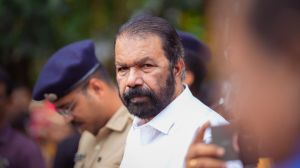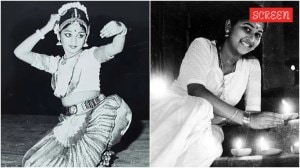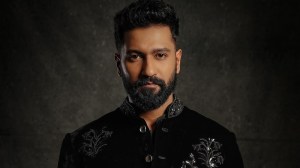Board Games
In early July 2003, cricket buffs from as far apart as Australia and the West Indies must have been a little surprised to read the most sing...

In early July 2003, cricket buffs from as far apart as Australia and the West Indies must have been a little surprised to read the most singular job ad in the cricket world. Bangladesh, the International Cricket Council’s newest full member — and worst Test team — was advertising globally for a chief executive for its cricket board.
The job demanded ‘‘an ability to negotiate…with a variety of stakeholders.’’ It called for ‘‘high-level presentation and communication skills’’, ‘‘ability to interact with the media’’, ‘‘understanding the…socio-political environment of Bangladesh’’, ‘‘IT skills’’. Applicants were invited to write to an Australian head-hunting agency.
Eventually Maqbool ‘Macky’ Dudhia got the job. The Zambia-born Zimbabwean of Gujarati origin became CEO of the Bangladesh Cricket Board starting October 1. Bangladesh may not have much of a cricket team but it’s walked the first steps to a modern, professionally-managed cricket administration.
It is the sort of story that wants to make you sigh. Somewhere, deep inside every Indian lurks an undying optimist. He’s entitled to his fantasies: eradicating illiteracy, de-politicising economic reforms, cleaning up the political system…professionalising the Board of Control for Cricket in India (BCCI).
As everyone knows, India’s richest sports body — in financial year 2003-04, its income is expected to be Rs 73.71 crore — is about as transparent as Delhi on a foggy January morning. Over the past week, two national selectors — Kiran More and Pranab Roy — have been brought under scrutiny in a bribery scandal and the board’s reputation for opacity has only got worse.
Has the selection process been compromised? Is the BCCI accountable to the cricket fan, to the media, indeed, to the country? There’s no point asking these questions. People have already drawn their own conclusions.
Some have argued that better paid selectors — not ‘‘honourable gentleman’’ who occupy honorary posts — are the answer. At least one board official dismisses this: ‘‘If you’re a man of integrity, you’re a man of integrity. Salaries have nothing to do with it.’’
Having said that, the BCCI has institutionalised ‘‘shamateurism’’; its officials get paid nothing, because they’re supposed to be doing their job for the love of it. As a result, they are accountable to none.
|
|
|
The ECB’s home is at Lord’s; the PCB’s is Gaddafi Stadium, Lahore. Cricket Australia’s home is in Jolimont, Melbourne. The BCCI’s address is: Kairali, GHS Lane, Manacud, Trivandrum, the address of current secretary SK Nair
|
|
|
So what’s needed?As one cricket official says, ‘‘Simply put, the BCCI has to bring its systems in tune with the fact that cricket is now a 12 months a year game, not one played for only about six months, with long gaps in between.’’ It needs, he says, full-time, properly-remunerated people for:
• handling tours and international cricket
• domestic cricket
• finance and marketing
• public affairs and communication
• technical issues;
• umpiring issues.
Take the first: essentially scheduling, ensuring that the team gets the right practice facilities and so on. ‘‘These are minor roles that should be performed down the line,’’ says one official, ‘‘when we tour abroad we hardly, if ever, meet the host board’s chief executive or president. We interact with key people responsible for running the tour. Here everything boils down to the BCCI president or secretary.’’
As a result, in Kolkata just before the recent tri-series final, it was left to Jagmohan Dalmiya, the BCCI president, to announce that Saurav Ganguly was injured and would not be playing. The Australian Cricket Board president would never dream of announcing Glenn McGrath’s fitness status. That’s the job of the coach, the physiotherapist or the media manager.
Does the Indian team have a media manager? Good question. Officially Amrit Mathur, a railways officer currently on study leave, is the BCCI’s communications director and went to the World Cup with the team over the past year as its media interface.
He was supposed to move to the BCCI on a three-year deputation, as a paid employee. Somewhere along the line the men who run Indian cricket got cold feet; and Mathur is going back to Rail Bhavan in January.
Take finance and marketing, long seen as the BCCI’s great strength. In 1999, the BCCI sold telecast rights for all cricket to be played in India for the next five years to Doordarshan. The deal earns the BCCI roughly Rs 54 crore a year. (Famously, the BCCI did not invite sealed bids but waited for television channels to approach it and begin verbal negotiations; but that’s another story.)
Astonishingly, the radio and Internet rights were bundled along with the television rights and given away free to DD. Nobody in the BCCI’s finance and marketing committee thought they were worth anything.
In the intervening period the FM boom and the explosion of cricket-related content on the Internet — accessed by Indians from Minneapolis to Matunga — have left the BCCI looking very, very silly.
In a corporate entity, an executive who failed to foresee the market thus would be reprimanded. In the BCCI, paunchy old men shrug and mutter, ‘‘What to do?’’ The BCCI gets away because it is not a business corporation, it is not a democratic society, it is, really, a cartel.
In theory, the BCCI will tell you it has multi-member committees for all the tasks its critics demand full-time managers for. In practice, what do these committees do, other than meet periodically, collect their DA and fly home?
|
|
|
In 1999, TV rights for all home international matches were sold to DD; Net and radio rights were packaged in for free. With the subsequent FM and Net boom, who is accountable for the crores lost?
|
|
|
The working committee is a strange animal. The BCCI’s four office-bearers — president, treasurer, secretary and joint secretary — are ex oficio members. So is one representative each from the associations running India’s five traditional test centres — Kolkata, Kanpur, Mumbai, Chennai, Delhi. That’s one from each of the BCCI’s five zones.
Additionally five other associations, one from each zone, are rotating, one-year members. Finally, if an association is to stage a test match in a 12-month period, it is entitled to a place on the working committee for that year.
‘‘In this way,’’ points out a former board official, ‘‘about 20 of the BCCI’s 31 member associations end up on the working committee.’’ It’s one happy family.
The contradictions stand out. The Uttar Pradesh Cricket Association has a permanent slot on the working committee but the Karnataka Cricket Association does not. The locus of the game has shifted, the BCCI has not.
Of course, the office-bearers and the working committee change by the year. Then the merry-go-round starts again.
A sports channel executive sums up what happens next: ‘‘The BCCI is just so ad hoc, it doesn’t even have a central address.’’
If you visit the ICC website (hosted at http://www.cricket.org), you’ll find that the England and Wales Cricket Board’s home is at Lord’s, London. The Pakistani board’s HQ is Gaddafi Stadium, Lahore. Cricket Australia’s home is in Jolimont, Melbourne.
The BCCI’s address is: Kairali, GHS Lane, Manacud, Trivandrum. Why? Simple, it’s the address of the current secretary, S.K. Nair.
As they say, there is the right way, there is the wrong way — and there is the Indian way. It’s a principle the BCCI has perfected to an art form.



- 01
- 02
- 03
- 04
- 05




























